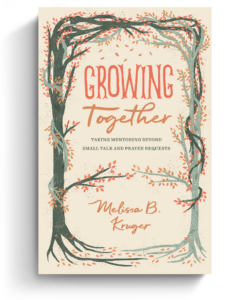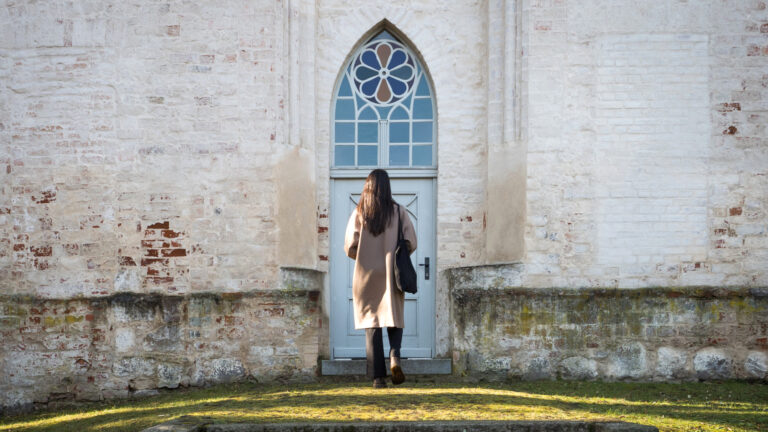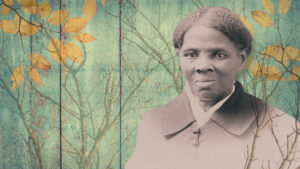We didn’t have a #genderreveal moment on social media.
But my wife and I did plan a private celebration to mark the day we found out our baby’s gender.
We had picked two restaurant options where we would have dinner, depending on what the ultrasound revealed. If our baby was a boy, we would celebrate at the local artisan sausage and beer hall. If a girl, we planned to dine at our favorite all-vegetable restaurant in downtown Los Angeles.
We did not have vegetables that night.
A few months earlier, we were in a Vancouver restaurant enjoying an amazing porchetta sandwich. The doors on this restaurant’s restrooms struck me as subversively old fashioned. Instead of plain white triangles or “all gender” notations, these two washrooms had two different labels. One said “meat” and the other said “bread.”
Is food gendered? It sounds ridiculous. But what does it mean that my wife and I immediately knew that brats and fries for dinner were more appropriate to celebrate our baby boy than kale and candied beets? What does it mean that everyone in that Vancouver restaurant knew which bathroom to use, simply by the “meat” or “bread” signs on the door? Why is it that meat and bread—or meat and vegetables—pair so well together?
It’s because they are not the same. They are different—beautifully different—in ways that enhance and bring the best out of the other. They are dignified, not diminished, by their complementary differences. They are part of a ordered cosmos of binaries—man and woman, light and dark, land and sea, salty and sweet—that bring structure, coherence, and irresistible beauty to life.
Not Clones. Complements.
When God said, “It is not good that the man should be alone” (Gen. 2:18), he did not just just create a clone of Adam. He created a complement. God’s solution to Adam’s “not good” problem was not two of the same flesh, as if company was all Adam needed. It was a one-flesh union, two distinct halves together making a whole.
As much as contemporary Western culture tries to suggest otherwise, the difference of male and female exists and matters. And it is not just random difference, but complementary difference—a difference that indicates the two were made for each other. Woman and man are sort of like a lock and key. A lock and a key are meaninglessly different unless they are made to go together. But when together, their difference opens something up, unlocking something fuller and deeper about the human experience.
Woman and man are sort of like a lock and key. A lock and a key are meaninglessly different unless they are made to go together. But when together, their difference opens something up, unlocking something fuller and deeper about the human experience.
The male and female in Genesis 1–2 point to a creational design for humans that is not just relational in a general sense, but relational in a complementary sense. As Todd Wilson contends in Mere Sexuality, the male and female sexes “don’t simply fit side by side, like peanut butter and jelly; they fit together in an interlocking pattern like puzzle pieces. They have been created for each other, to complete each other in the most profound sorts of ways.” This is a relational dynamic that includes marriage but extends beyond it, Wilson argues:
We need opposite-sex relationships not only to complement and strengthen the other sex but to learn more about our own sex. . . Karl Barth put it brilliantly: ‘It is always in relation to their opposite that man and woman are what they are in themselves.’
We see the beauty of male-female complementarity not only in marriage but also in how the two sexes interact in other relationships, whether in the church, workplace, community, or extended family. As Barth suggested, there is a sense in which the fullness of being “male” is realized only in relationship with “female,” and vice versa. Marriage is a powerful way this fullness is manifest, but it is not the only way.
Male and female are not fluid, easily interchangeable constructs we fashion from below. Rather, they represent a complementary unity from above: one that goes beyond bodily or even gendered polarity. It is a complementary unity that reflects the structure of the wider world and the God who created it.
Male and female are, after all, not the only complementary polarities in God’s creation sequence in Gen. 1-2. There is also light and dark, evening and morning (1:3-5), waters above and below (1:6-8), land and sea (1: 9-10). As N. T. Wright has pointed out, these polarities show up consistently in Scripture, from Genesis to Revelation:
The binaries in Genesis are so important. . . It’s all about God making complementary pairs which are meant to work together. The last scene in the Bible is the new heaven and the new earth, and the symbol for that is the marriage of Christ and his church. It’s not just one or two verses here and there which say this or that. It’s an entire narrative which works with this complementarity so that a male-plus-female marriage is a signpost or a signal about the goodness of the original creation and God’s intention for the eventual new heavens and new earth.
Fundamental Polarity
This bigger picture complementary orientation of creation—of which sexual difference is but one profound example—shows up memorably in a passage from C. S. Lewis’s Perelandra:
Everyone must sometimes have wondered why in nearly all tongues certain inanimate objects are masculine and others feminine. What is masculine about a mountain or feminine about certain trees? . . . Our ancestors did not make mountains masculine because they projected male characteristics into them. The real process is the reverse. Gender is a reality, and a more fundamental reality than sex. Sex is, in fact, merely the organic adaptation to organic life of a fundamental polarity which divides all created beings. Female sex is simply one of the things that have feminine gender; there are many others, and Masculine and Feminine meet us on planes of reality where male and female would be simply meaningless.
In this provocative passage, Lewis forces our gender-confused culture to reckon with the reality that masculine and feminine are higher-level categories with implications for all creation. Like Wright’s assertion of an “entire narrative” of biblical complementarity, Lewis situates the male and female sexes within a “fundamental polarity” that divides all created things.
Peter Kreeft sounds a similar note in the Vatican-produced Humanum video series, referencing the complementary pairing of land (“one of the most masculine things in the world”) and sea (“one of the most feminine things in the world”) as another “fundamental polarity” of nature that can help us grasp male and female:
[Land and sea] are deeply satisfying together, and we can’t quite analyze why we find that satisfaction and that peace and that sense of rightness. . . . The shore is the most popular place on earth. Waterfront property is the most expensive property anywhere in the world. Because that’s where the sea and the land meet. That’s where man and woman meet. The land without the sea is kind of boring, desert. The sea without the land is kind of boring. When are we going to land the ship? But the place where they meet, that’s where all the action is. And that’s where we want to be.
Wright, Lewis, and Kreeft understand that male and female are more than social constructs. They are also more (but not less) than distinct biological categories. Male and female are our more potent symbols, wired into creation, of the life-giving, mutually edifying nature of differentiation.
And it’s not just Christian thinkers who recognize this point.
Male and female are our more potent symbols, wired into creation, of the life-giving, mutually edifying nature of differentiation.
In his book 12 Rules for Life, psychologist Jordan Peterson writes about the “fundamentally bipartisan conceptual subdivision” and “structured, creative opposition” that can be seen throughout existence, of which male and female is just one—albeit the most potent—example. He suggests that even without religion we can see the “fundamental, beyond-the-metaphorical reality of this symbolically feminine/masculine divide.”
When we deny differences between men and women, suggesting they are interchangeable and meaningless categories with no reference to biology, we weaken both sexes, liberal feminist scholar Camille Paglia argues.
In her new book of essays, Free Women, Free Men, Paglia—who in various places describes herself as lesbian or transgender—admits that while she believes gender is “malleable and dynamically shaped by culture,” there is nonetheless an undeniable male-female binary that humans come back to, again and again:
The frequency with which gender roles return to a polarized norm, as well as the startling similarity of gender roles in societies separated by vast distances of time and space, does suggest that there is something fundamentally constant in gender that is grounded in concrete facts. . . . The majority of earthlings do seem to find clear gender roles helpful compass points in the often conflicted formation of identity.
Reclaiming the Beauty
What is lost when gender becomes merely a fluid social construct with no “compass points,” or simply one among many accoutrements of expressive individualism? What is lost when the idea of “complementarity” is abandoned or demeaned because (like anything good) it can be abused or applied in problematic ways?
Among many other things, beauty is lost.
To deny or obscure the distinctive, complementary traits of men and women is to reject the creative genius of humanity’s creator. This denial also diminishes our own aesthetic enjoyment, as beings wired to enjoy a world of stunning polarities and complementary contrasts.
Imagine if the earth were entirely ocean, with no visible land. Imagine if every painting in the Louvre were monochrome. Imagine if we could only taste salty things or only hear major chords.
Contrast is fundamental to what we find beautiful. It is central to the most spellbinding paintings, the most memorable culinary experiences, the most stirring symphonies.
Contrast is fundamental to what we find beautiful. It is central to the most spellbinding paintings, the most memorable culinary experiences, the most stirring symphonies.
Why are humans universally drawn to sunrises and sunsets as the most picturesque and strangely transcendent moments of the day? Because they are the moments of most intense contrast between light (day) and dark (night).
We gravitate to beaches because of the contrast of water and rock. We pause before the deep canyon or towering mountain because it dramatically contrasts with the flatland around it. We enjoy the combinations of meat and bread, bacon and maple, savory and sweet, because our taste buds are made for contrast.
Contrast is attractive and beautiful to us, in part because it gives life. Ecosystems flourish where water and rock intersect. New lives are born when a male and female mate. Out of a “two halves, one flesh” union, a new flesh is born.
I experience this truth tangibly every time I put my hand on Kira’s belly and feel my son kick in the womb. He is a boy, but when he is born he will doubtless bear the image of both his father and mother—a product of our love and a testimony to the awesome mystery and generative beauty of God’s complementary design.
Involved in Women’s Ministry? Add This to Your Discipleship Toolkit
 We need one another. Yet we don’t always know how to develop deep relationships to help us grow in the Christian life. Younger believers benefit from the guidance and wisdom of more mature saints as their faith deepens. But too often, potential mentors lack clarity and training on how to engage in discipling those they can influence.
We need one another. Yet we don’t always know how to develop deep relationships to help us grow in the Christian life. Younger believers benefit from the guidance and wisdom of more mature saints as their faith deepens. But too often, potential mentors lack clarity and training on how to engage in discipling those they can influence.
Whether you’re longing to find a spiritual mentor or hoping to serve as a guide for someone else, we have a FREE resource to encourage and equip you. In Growing Together: Taking Mentoring Beyond Small Talk and Prayer Requests, Melissa Kruger, TGC’s vice president of discipleship programming, offers encouraging lessons to guide conversations that promote spiritual growth in both the mentee and mentor.

































